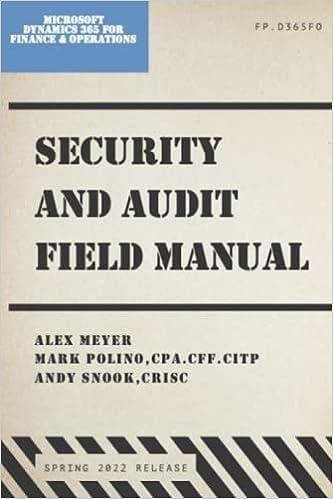Question
Croyden is a calendar year, accrual basis corporation. Mr. and Mrs. Croyden (cash basis taxpayers) are the sole corporate shareholders. Mr. Croyden is president of
Croyden is a calendar year, accrual basis corporation. Mr. and Mrs. Croyden (cash basis taxpayers) are the sole corporate shareholders. Mr. Croyden is president of the corporation, and Mrs. Croyden is vice president. Croydens financial records, prepared in accordance with GAAP, show the following information for the year: Use Table 7-1 and Table 7-2
| Revenues from sales of goods | $12,900,000 |
| Cost of goods sold (LIFO) | (9,260,000) |
| Gross Profit | $ 3,640,000 |
| Bad Debt Expense | $ 24,000 |
| Administrative salaries and wages | 612,000 |
| State and local business taxes | 135,000 |
| Interest Expense | 33,900 |
| Advertising | 67,000 |
| Annual Property insurance premium | 19,800 |
| Annual Life Insurance Premiums | 7,300 |
| Depreciation Expense | 148,800 |
| Repairs, Maintenance, Utilities | 81,000 |
Croydens records reveal the following facts:
- Under the UNICAP rules, Croyden had to capitalize $142,800 of administrative wages to inventory. These wages were expensed for financial statement purposes.
- Because of the UNICAP rules, Croydens cost of goods sold for tax purposes exceeds cost of goods sold for financial statement purposes by $219,000.
- Bad debt expense equals the addition to the corporations allowance for bad debts. Actual write-offs of uncollectible accounts during the year totaled $31,200.
- Administrative salaries include an accrued $50,000 year-end bonus to Mr. Croyden and an accrued $20,000 year-end bonus to Mrs. Croyden. These bonuses were paid on January 17 of the following year.
- The life insurance premiums were on key-person policies for Mr. and Mrs. Croyden. The corporation is the policy beneficiary.
- Croyden disposed of two assets during the year. (These dispositions are not reflected in the financial statement information shown.) It sold office furnishings for $45,000. The original cost of the furnishings was $40,000, and accumulated MACRS depreciation through date of sale was $12,700. It also exchanged transportation equipment for a 15 percent interest in a partnership. The original cost of the transportation equipment was $110,000, and accumulated MACRS depreciation through date of exchange was $38,900.
- MACRS depreciation for assets placed in service in prior years (including the office furnishings and transportation equipment disposed of this year) is $187,600. The only asset acquired this year was new equipment costing $275,000. The equipment has a seven-year recovery period and was placed in service on February 11. Assume that Croyden does not elect Section 179 or bonus depreciation with respect to this acquisition.
- Croydens prior-year tax returns show no nonrecaptured Section 1231 losses and a $7,400 capital loss carryforward.
Solely on the basis of these facts, compute Croydens taxable income. (Round your intermediate computations to the nearest whole dollar amount.)
Also Note: This question has been chegged before, the answer is not $2,204,000 or $3,433,700. Thank you!


Step by Step Solution
There are 3 Steps involved in it
Step: 1

Get Instant Access to Expert-Tailored Solutions
See step-by-step solutions with expert insights and AI powered tools for academic success
Step: 2

Step: 3

Ace Your Homework with AI
Get the answers you need in no time with our AI-driven, step-by-step assistance
Get Started


